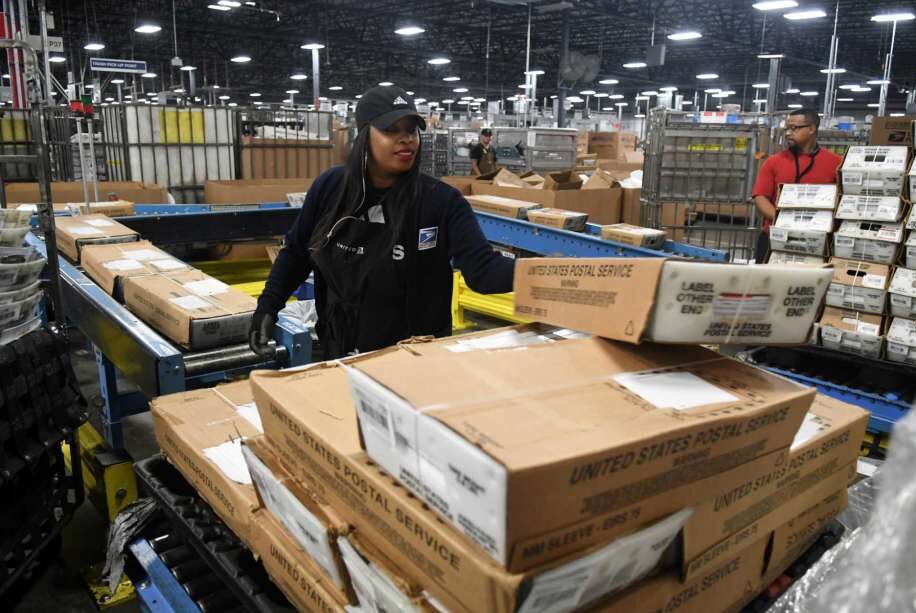A Senate committee will shortly consider its version of the Postal Service Reform Act of 2021 to come to grips with a U.S. Postal Service’s financial struggles. The good news is Congress is stumbling in the right direction. The danger is it could trip over some really hazardous policy proposals.
Growing e-commerce delivers a gift package to USPS.
First, the context. USPS cumulative losses since fiscal year 2007 were some $87 billion, including a loss of $9.2 billion in fiscal 2020. First-class mail revenue dropped from $37.6 billion in 2007 to $23.8 in 2020 as businesses and consumers went electronic.

A bright spot is that for fiscal 2020, shipping and package revenues grew to $28.5 billion against $22.8 for the prior year. Remarkably, in the three months ending December 31, 2020, USPS had a $318 million surplus of operating revenues over expenses. Shipping and package revenues were $9.4 billion in that quarter, compared to $6.6 billion in the same quarter in 2019. By contrast, first-class mail revenue was only $6.3 billion, down from $6.5 billion in the same 2019 quarter.
The good news comes from American businesses large and small working hard to meet consumer demand for home deliveries and even from Amazon, which not only make deliveries with its own vehicles but also pays USPS to deliver many packages for it as well. The Postal Service is required by law to charge such shippers the direct costs, like for the carrier bringing packages to your door, as well as part of the overhead costs, for example, for post office buildings. Charges collected by USPS for delivering packages for eBay and the growing number of businesses taking online orders rounds out the positive revenue picture.
Crash and burn the Postal Service?
It is a four-win situation: for ecommerce businesses, brick-and-mortar enterprises, and private individuals shipping nationwide; for carriers like Amazon that partner with USPS for “final mile” deliveries; for customers who pay lower shipping prices for reliable service; and for USPS.
But spoil-sport United Parcel Service (UPS) wants to force USPS to jack up its rates for delivering packages so private businesses and individuals will abandon USPS for UPS. UPS, of course, would then charge much higher prices. That helps UPS but hurts everyone else. And losing package delivery revenues—those revenues now help offset USPS losses from delivering mail—would cause the Postal Service to crash and burn (likely requiring a taxpayer bailout)
One policy pushed on Congress by those who would destroy USPS is to force it to create a separate system for delivering mail and packages. This is business insanity. Currently, the same carrier coming to your door brings both mail and packages. UPS knows that if carriers are required to make separate trips for mail and package deliveries, the prices USPS will need to charge shippers will skyrocket, service reliability will suffer, and package volume and revenues would crash. Fortunately, Section 202 of the 2021 Reform Act would make official what has been the USPS system all along, “an integrated network” delivering mail and packages together six days a week throughout the country.
Another ploy to push up USPS package rates relies on fake accounting. Notably, UPS and other critics have sought to mandate the widely discredited “Fully Distributed Costing” accounting trick that arbitrarily allocates costs not directly related to services provided. The Postal Rate Commission (PRC) rightly ignored that recommendation from a flawed 2018 task force report, and Congress rejected this approach in the Postal Accountability and Enhancement Act of 2006.
Although the Reform Act’s Section 203 does call for a reexamination of how postal costs and prices are determined, it would give the task to the PRC, the independent agency with expertise to conduct the assessment and which, in accordance with the legally mandated rules, regularly reviews USPS package prices to ensure that they more than cover both direct and an appropriate share of overhead costs.
Wither the Postal Service?
Some ask, with ecommerce and social media reducing physical mail volume—UPSP’s historical core service—and with efficient private package delivery companies, why not let USPS collapse? The political reality is Congress will not let that happen, certainly because of the immediate economic damage it would cause. A realistic path would be for USPS to expand work-sharing and contracting out to private companies for logistic services and, as the proposed Reform Act does, prevent USPS from offering other commercial services, which it never does well.
The Reform Act also would eliminate the requirement that USPS pre-fund employee retirement services, which is a primary source of USPS deficits, and is an obligation not put on any other federal agency or private company. The bill also would put USPS retirees on Medicare for which they pay during their working lives. (Of course, Medicare faces its own fiscal problems, and private retirement savings and medical accounts could better serve retirees.)
Postmaster General Louis DeJoy has formulated a ten-year plan for USPS. But exponential technologies will radically transform the business practices and the economy in coming decades. The future role of USPS is impossible to predict, but it serves neither the present nor the future to destroy USPS at this time.
—————-
Edward Hudgins, Ph.D., is founder of the Human Achievement Alliance and editor of The Last Monopoly: Privatizing the Postal Service for the Information Age and Mail @ the Millennium: Will the Postal Service Go Private? He can be reached at [email protected] .